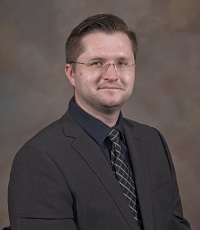
Special to Iredell Free News
If you are looking for a new primary care provider, you may notice that some providers have “internal medicine” listed under their names. This can be confusing for those unfamiliar with the term. You may ask yourself, “Can an internal medicine physician still be my primary care provider? How is internal medicine different than family medicine? Do they only treat diseases affecting internal organs?”

To help clear up some of this confusion, Dr. Samuel J. Stelmach, a physician at Iredell Internal Medicine, helps explain what internal medicine is, how internal medicine differs from family medicine, and why he decided internal medicine was the right career path for him.
As National Internal Medicine Day, observed on October 28, approaches, it’s the perfect time to learn more about internal medicine and see if an internal medicine physician is right for you.
What is internal medicine?
When you see “internal medicine” under a provider’s name, you may initially think that physician focuses on diseases affecting internal organs. According to Stelmach, this is a very common misconception.
“Many people think that internal medicine physicians only treat internal systems when they actually treat most medical conditions of the body,” said Stelmach.
Though the word “internal” can be misleading, an internal medicine physician treats much more than just organs inside your body.
These physicians focus on treating all types of diseases and conditions in adult patients — from 18 years old all the way through the geriatric years. Some internal medicine physicians also see children, but to do this, they must have additional training in pediatrics.
Internal medicine is the largest primary care specialty in the United States, and an internal medicine physician can be your primary care provider.
Internal medicine physicians may also be called internists, general internists, or doctors of internal medicine. Their training includes medical school and an additional three years of training in preventing, diagnosing, and treating adult disease. They can also choose to do additional training in a subspecialty such as cardiology, oncology, or gastroenterology, to name a few.
These physicians can provide care in an office or clinic, during a hospital stay, and in nursing homes.
How is internal medicine different than family medicine?
Both internal medicine and family medicine are primary care specialties, so you can choose either as your primary care provider. However, the main difference between the two is internal medicine physicians treat primarily adults 18 and over, whereas family medicine physicians treat patients of all ages.
“Internal medicine strictly focuses on adult care, so it is more specialized in that regard as there is no focus on infants or children. Generally, an internal medicine physician has more subspecialty training as well,” said Stelmach.
Internal medicine physicians have special training in adult medical care and provide ongoing care for chronic illnesses. They are experts in complexity as they often care for patients with more than one chronic disease.
“All physicians encounter complex decisions due to dealing with several chronic conditions. Since internal medicine sees a patient population that has increased average age compared to family medicine, it is likely that, on average, internal medicine has to deal with more complex interactions of various medical conditions,” said Stelmach.
Another difference, internal medicine physicians have extensive hospital and inpatient care training, so they are more likely to work in the hospital setting than a family medicine physician.
So, if you are admitted to the hospital, you will more than likely be under the care of an internal medicine physician. Internal medicine physicians that work in the hospital are frequently referred to as hospitalists.
Family medicine and internal medicine physicians both treat similar conditions. According to Stelmach, some of the conditions he most frequently sees include hypertension, diabetes, atrial fibrillation, heart failure, and COPD.
If you are an adult who is currently managing a chronic disease, an internal medicine physician may be an excellent option for you. However, adults who are healthy can also choose an internal medicine physician as their primary care provider.
Why did Stelmach choose internal medicine?
“The option to be well-versed in many aspects of medicine and treatments for various medical conditions, and to be able to do so in either the outpatient or inpatient side of care without hesitation, if needed, is what drew me to internal medicine,” said Stelmach.
Seeing his patients’ medical conditions improve is what he finds most rewarding about his job.
Stelmach practices at Iredell Internal Medicine, located at 757 Bryant Street, in Statesville, and is accepting new patients. If you would like to schedule an appointment with Dr. Samuel Stelmach, call the office at 704-873-5658.
About Iredell Health System
Iredell Health System includes Iredell Memorial Hospital; Iredell Mooresville; Iredell Home Health; Iredell Wound Care & Hyperbaric Center; Community and Corporate Wellness; Occupational Medicine; the Iredell Physician Network and more. Iredell Memorial Hospital is the largest and only nonprofit hospital in Iredell County. The comprehensive healthcare facility has 247 beds; more than 1,700 employees; and has 260 physicians representing various specialties. Centers of excellence include Women’s and Children’s; Cardiovascular; Cancer; Surgical Services and Wellness & Prevention. The Health System’s newest campus, Iredell Mooresville, is home to the area’s only 24-hour urgent care facility, as well as an ambulatory surgery center, imaging center, rehabilitation services, and physician practices. The mission of Iredell Health System is to inspire wellbeing. For a comprehensive list of services and programs, visit www.iredellhealth.org.



